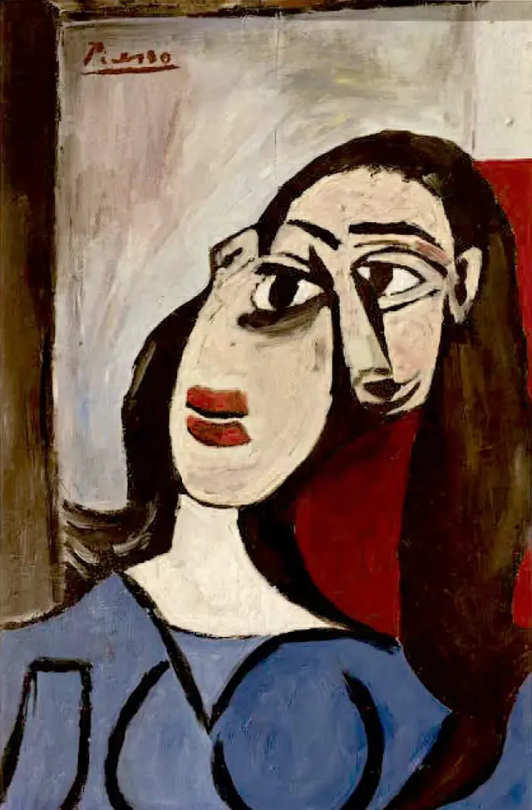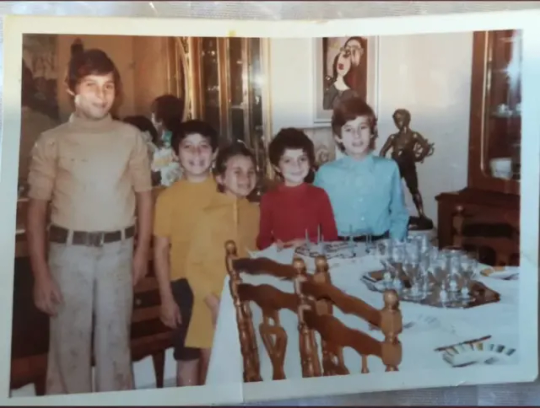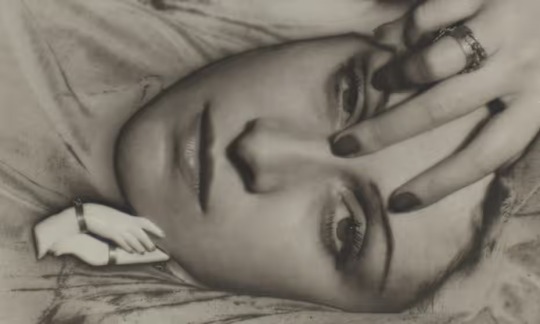#pablo dora
Explore tagged Tumblr posts
Text

"Hey, bestie..."
"Explain."

"So I dunno where they are!"
"Swiper, why are you like this?"

"Not again, broooo 💀" ahh poses

"When did she get this taller?"
"I hate it."
"Me too."
"I never noticed her height..."
"Um... May I speak now?
#swiper the fox#dora the explorer#bennythebull#bootsthemonkey#ticothesquriell#dora and friends#pablo dora
1 note
·
View note
Text

Dora Maar. Rosemunde Wilms with Pablo Picasso Painting in the Background in his Room at the Hotel Vaste Horizon, Mougins, (Rosamund Wilms avec Pablo Picasso Peignant en Arrière Plan dans sa Chambre à l’Hôtel Vaste Horizon, Mougins), 1937.
559 notes
·
View notes
Text

Pablo Picasso Portrait de Dora Maar, 1937 Oil on canvas.
#pablo picasso#dora maar#cubism#art#painting#oil painting#oil on canvas#modern art#figurative painting#portrait painting
204 notes
·
View notes
Text
Muse of a thousand disguises...
— PABLO PICASSO ⚜️ “Expressément nue”, Pablo Picasso & Dora Maar: A Period of Conflict, written c. February 23, 1942, on Dora Maar, (2021)
#Spanish#Pablo Picasso#Enrique Mallen#Pablo Picasso and Dora Maar: A Period of Conflict#(2021)#Dora Maar
60 notes
·
View notes
Text


1. Pablo Picasso, “The Weeping Woman” (1937), oil on canvas, 50 x 61 cm.
2. Pablo Picasso, “Portrait of Dora Maar” (1937), oil on canvas, 65 x 92 cm.
16 notes
·
View notes
Text

‘Horrible’ Painting Found by a Junk Dealer Could Be a Picasso Worth $6 Million
An Italian family had long debated throwing away the unconventional portrait.
It’s not often you sit down to read a book about the greatest masterpieces of art history, then look up to find a stellar example hanging on your own wall. Yet this was apparently the experience of Andrea Lo Rosso, who began raising questions about a peculiar painting in his parents’ living room at their home on Capri in Italy. Could it possibly be by Picasso, the forefather of Modern art himself?
For years the man’s parents had argued over the unconventional portrait, which was discovered by his father Luigi Lo Rosso in the cellar of a villa in Capri 1962, given a cheap frame, and put on the wall. This did not please his wife, who despaired at the female sitter’s strangely contorted face. The scrawled name “Picasso” in the top left hand corner meant nothing to either of them.
“My father was from Capri and would collect junk to sell for next to nothing,” Lo Rosso told the Guardian. “He found the painting before I was even born and didn’t have a clue who Picasso was. He wasn’t a very cultured person.”
“My mother didn’t want to keep it—she kept saying it was horrible,” he added.

The family sought out the counsel of the Arcadia Foundation, which carries out art attributions and appraisals. A member of its scientific committee, Dr. Cinzia Altieri, a trained graphologist or handwriting specialist, studied the signature on the painting. The foundation also enrolled the help of famed art detective Maurizio Seracini, who led a chemical-scientific analysis of the work.
As a team, these experts have confirmed the attribution to Picasso. The painting has been identified as a portrait of Dora Maar, the French Surrealist photographer, painter, and poet who was at that time Picasso’s mistress.
It is believed to have been made some time between 1930 and 1936 during a trip to Capri, where Picasso often visited, although he first met Maar in late 1935 or early 1936. The pair had a relationship lasting nearly nine years and, though she was an artist in her own right, Maar’s work has only recently received the attention it deserves. In 2019, a landmark retrospective of over 250 works by Maar was presented at the Centre Pompidou in Paris and Tate Modern in London.
If the attribution turns out to be true, the Lo Rossos can expect a financial windfall. The Arcadia Foundation has valued the alleged Picasso at €6 million ($6.7 million).
The artist painted many portraits of Maar in their time together, and several reside in major museum collections today. The auction record for a painting of Maar by Picasso was set in 2006, when Sotheby’s New York sold Dora Maar au chat (1941) for $95.2 million, according to the Artnet Price Database.
Unfortunately for this team of Italian art sleuths, their rediscovered modernist masterpiece piece is unlikely to fetch in the millions until it has been legitimized by official Picasso authenticators.
Andrea Lo Rosso said that, so far, the Picasso Foundation in Malagá, Spain has refused to even assess the work, which it believes to be a fake. The foundation declined to comment publicly on the work when contacted. It reportedly receives hundreds of authentication requests every day.
The Picasso Administration in Paris has also been reached for comment but did not respond by publication time.
By Jo Lawson-Tancred.

#Pablo Picasso#‘Horrible’ Painting Found by a Junk Dealer Could Be a Picasso Worth $6 Million#Dora Maar#spanish artist#painter#painting#art#artist#art work#art world#art news#lost and found
21 notes
·
View notes
Text

Dora Maar (FR, Paris, Nov 22, 1907 - 1997, Paris)
"Guernica" en cours d'exécution, état VII, atelier des Grands-Augustins, Paris, 1937 [paintbrushes still wet]
thnx teleclub
https://www.artsy.net/artwork/dora-maar-huile-sur-toile-guernica-en-cours-dexecution-etat-vii-atelier-des-grands-augustins-paris
#Dora Maar#Henriette Theodora Markovitch#Guernica#pablo picasso#documentary#photography#history#hi res
10 notes
·
View notes
Text

Dora Maar by Pablo Picasso, 1960
16 notes
·
View notes
Text

Pablo Picasso, Dora Maar with green fingernails, 1936
31 notes
·
View notes
Text

Pablo Picasso, Dora Maar con las uñas verdes, 1936
34 notes
·
View notes
Text


When Dora Maar died on 16 July 1997 at the age of 89, few people seemed to notice. It took the French newspaper Le Monde – in her home country – 10 days to publish anything. And when journalists did cotton on, they didn’t seem to think Maar was the story. The New York Times called her “a muse of Picasso” and the “principal model for many of his so-called weeping women portraits in the late 30s and early 40s”. The Independent, while admitting that Maar had been an artist in her own right, suggested that she would nonetheless be “remembered as the most poignant of Pablo Picasso’s mistresses”.
Forget that she’d also been a major surrealist photographer, one of the few women in that circle, and that she was still painting into her 80s. For critics, she was Picasso’s Weeping Woman – the eternally spurned mistress and muse. Maar herself bitterly resented being regarded as a sort of art-world Miss Havisham, the subject of someone else’s picture. “All [Picasso’s] portraits of me are lies,” she once said. “Not one is Dora Maar.”
Not before time, the Weeping Woman is having the last laugh. After a spell at the Pompidou in Paris, a major retrospective is heading to London’s Tate Modern then Los Angeles. The largest exhibition of its kind yet staged, it features nearly 300 objects: photographs, photomontages, advertising mock-ups, self-portraits, watercolours, oil landscapes and still lives. Few of these objects have been exhibited before, and certainly not on this scale. The sense is of a curtain being pulled back. Forget those Picasso portraits: here is how Dora Maar actually wanted to be seen.
Born Henriette Théodora Markovitch in Paris in 1907, to a French mother who owned a fashion boutique and a father who was a Croatian architect, her upbringing was multicultural. The family relocated to Buenos Aires when she was three, and she spent her childhood shuttling between Europe and South America, taking her first photographs on the sea journeys between. She trained as a painter in Paris, but found herself drawn to photography in the 1920s, becoming friendly with Henri Cartier-Bresson and Brassaï.
“She was very ambitious,” says her biographer, Victoria Combalia. “She wasn’t sure which direction she was going in, but she had such energy.”
In 1936 she met Picasso, and seems to have decided that the painter, nearly 30 years older, was her next project. The story of the encounter that turned them into lovers has been much mythologised. Legend has it that Maar sat in the famous literary watering hole, the Cafe les Deux Magots, playing a game where she stabbed a knife between her fingers to excite Picasso’s attention.
Whatever the truth, Combalia suggests that the striking thing is the way it suggests that she, not he, was in charge. “She wanted to seduce him, I’m sure. The whole scene with the knife is like a sadistic joke, almost a performance.”
Yet the balance soon tipped the other way. Picasso was also having a long-running affair with Marie-Thérèse Walter, which he refused to break off. He seems to have taken a perverse thrill in making Walter and Maar compete for his affections, describing a story where they came to blows in his studio as “one of my choicest memories”. Having initially painted Maar as a nymph or a bird, his portraits begin to show her in tears, notably the excruciating Weeping Woman (1937), now in Tate’s permanent collection, in which she seems to dissolve before our eyes.
Maar’s own artistic response is similarly hard to look at, though in quite different ways. A painting of hers from the same year, The Conversation, shows her and Walter sitting next to each other, almost in mirror image. Walter looks out, passive and inscrutable; Maar has her back to us, face hidden.
Yet while the relationship was emotionally punishing, it was productive. 1937 was also the year that Picasso painted Guernica, and Maar – as well as teaching him darkroom techniques – agreed to photograph the process of its creation. Indeed, it seems likely that his decision to depict that particular atrocity came from Maar, who was far more politically engaged. Not only does its style – severe black-and-white, almost photographic in its pitiless detail – borrow from her work, she actually painted a small section of it.
“He trusted her,” says Tate Modern director Frances Morris, who interviewed Maar when the latter was in her 80s. “As much as being a sexual or emotional relationship, it was a collaborative one.”
When their relationship finally fell apart in 1945, Maar was devastated and suffered a brief breakdown, intensified by the death of her mother. The guilt-stricken Picasso helped her buy a house in Provence, where she spent an increasing amount of her time. Catholicism began to occupy her life; rumours circulated – fanned by her former partner – that she’d gone mad, or become a recluse.
The truth is different, Combalia says: Maar kept making art, producing textile designs and devoted more time to painting. She also travelled, and continued to exhibit through the 50s and 60s. It’s also not true that she abandoned photography, as some claim. Though she made fewer photographs after the break with Picasso, she continued to experiment, crafting a late series of photograms (photographic prints made without a camera) in the 80s, as if reconnecting with her younger artistic self.
Maar never regained the profile she had experienced in her 20s, yet it’s wrong to say she disappeared. It was a slow withdrawal, and came about largely because Maar wanted to focus on her art. “In letters she writes, ‘Well, I don’t want to be social, I want to do my own thing. I have to paint,’” says Combalia
Morris, who visited Maar at her apartment in Paris in 1990, agrees. “It was an artist’s home. Every surface, every wall, spoke of that. There were easels and lots of canvases in her studio, covered in polythene. She was still working.”
What was Maar like to meet? Morris laughs: “When she answered the door, I thought at first it was the maid, this little old woman.” But she was soon struck by Maar’s forcefulness. “She was terrifically strong, you could see that. I think that’s what it was, in a way: making art was more important to her than how she was perceived.”
“She was very curious about the world,” Combalia adds. “She was always asking me what I was doing in Paris, what the name of my boyfriend at the time was. She loved gossip.”
Despite Maar’s talents being overlooked during her lifetime, Combalia believes we should be grateful that we can see so much work, and that so much of it is so good. “She really deserves to be known. We owe her that justice.”
40 notes
·
View notes
Text

Dora Maar photographed by Picasso, 1936.
I don't think I've seen a Picasso photo before.
65 notes
·
View notes
Text

Man Ray: Pablo Picasso & Dora Maar (1937)
12 notes
·
View notes
Text

Pablo Picasso
Buste de Femme (Dora Maar), 1938
#pablo picasso#picasso#dora maar#cubism#cubist painting#painting#art#art history#modern art#figurative art
81 notes
·
View notes
Text
A complex character, she was a figure of contradictory facets, alternately expressing sensuality and suffering, sophistication and animality.
— ENRIQUE MALLEN ⚜️ Pablo Picasso & Dora Maar: A Period of Conflict, on Dora Maar, (2021)
54 notes
·
View notes
Text


Dora Maar, Portrait of Pablo Picasso, 1936, Pastel on paper
Dora Maar, Portrait of Picasso, Paris, studio 29, rue d'Astorg Winter, 1935, Silver gelatin negative on flexible support in cellulose nitrate
#dora maar#french artist#french art#french photographer#pablo picasso#spanish artist#spanish painter#women artists#woman artist#woman photographer#women photographers#art on tumblr#surrealist#surrealism#surrealist photography#art photography#modern art#art history#aesthetictumblr#tumblraesthetic#tumblrpic#tumblrpictures#tumblr art#aesthetic#tumblrstyle#beauty
21 notes
·
View notes